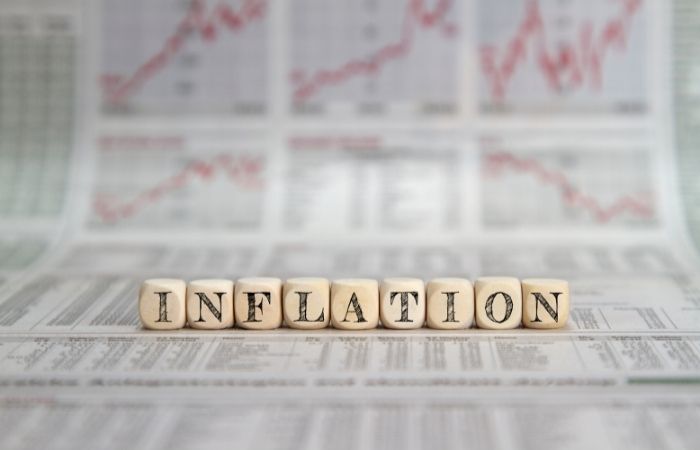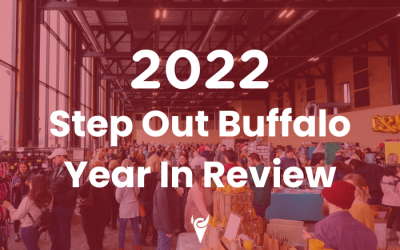This post was written by Christian Martinez, CERTIFIED FINANCIAL PLANNER™, Advisor Associate of Sandhill Investment Management, and Patrick Collins
Millions of Americans continue to be hindered by rising consumer prices. Can the U.S. find a way to tame inflation while avoiding a recession?
Earlier this week, President Biden sat down with Federal Reserve Chairman Jerome Powell and Treasury Secretary Janet Yellen in a highly publicized meeting at the White House.
Their goal? Discuss how they can steer the U.S. economy toward a “soft landing” by taming inflation, maintaining a robust labor market, and keeping nationwide unemployment low.
Despite the destructive disruption occurring around the globe—including the war in Ukraine, extended supply chain shortages, and prolonged lockdowns in Shanghai, among others—many Fed leaders believe that achieving a soft landing is still within reach. As Mr. Powell told reporters in mid-May, “There are a number of plausible paths to having a soft or soft-ish landing. Our job isn’t to handicap the odds; it’s to try to achieve that.” When taking a comprehensive look at the state of the markets around the world, it begs the question: is a painless economic recovery still possible in America? Or should a near-term recession be considered inevitable?
Inflation: No Longer “Transitory”
America’s inflationary struggles have been well documented in recent months. According to the U.S. Bureau of Labor Statistics, the annual inflation rate reached a whopping 8.5 percent in March—marking the fastest such year-over-year increase since December 1981. Despite Mr. Powell’s comments about inflation being “transitory” around this time last year, we now know that the Fed severely underestimated these price hikes.
It’s no secret that inflationary pressures have caused prices to reach record highs. From gas to groceries, take a look at how much price increases on these necessities have impacted Americans’ wallets this year:
- The average price of a gallon of gas continued to shatter national records after reaching $4.71 this week (as of June 2, 2022). In all 50 U.S. states, average gas prices exceeded $4.00 per gallon.
- Food and grocery prices accelerated for the 11th consecutive month to 9.4 percent in April 2022, representing the highest reading since April 1981.
- The price of natural gas has tripled since January, surging to its highest level in more than a decade. These increases have subsequently influenced heating and electricity costs for millions of Americans.
As the cost of consumer goods continues to climb, many Americans—particularly those in lower-income households—must maneuver their budgets to afford these basic essentials, leaving them with lesser amounts to spend on discretionary goods.
Fed’s Response to Fighting Inflation
With inflation at an all-time high, President Biden has enabled the Federal Reserve to tackle this enormous economic challenge by tightening monetary policy. To counteract the rise in inflation, the central bank agreed to raise benchmark borrowing rates by half a percentage point—or 50 basis points—at future Fed meetings until prices begin to fall.
According to Mr. Powell, the Fed “will go until we feel we’re at a place where we can say financial conditions are in an appropriate
place, where we see inflation coming down.” The decision to raise the federal funds target rate is designed to make the cost of borrowing more expensive for consumers and businesses alike. Because of higher rates, borrowers will be forced to repay greater amounts of interest on their loans. By making borrowing more expensive, fewer people will take out loans from banks, which will ideally reduce the amount of money in circulation, lower inflation, and cool off the economy.
Inflationary Impacts
So what do these rate hikes by the Fed mean for everyday Americans? Let’s break down the impact on securities, savings accounts, and larger purchases, such as new homes or cars.
Securities
As interest rates continue to climb, investments like stocks could suffer. The Fed’s rate hikes make borrowing more expensive for all—individuals and corporations alike. Because of higher interest rates, publicly traded companies may see their revenues and earnings decline, leading to poorer stock performance. In addition, significant rate increases could negatively impact how individual investors view the market, causing them to pull their money out of growth-oriented investments and into safer, more conservative ones.
Bonds—which have historically been sensitive to increases in interest rates—will also see a decline in value. Existing bonds with lower interest rates are viewed as less attractive to investors compared to new bonds offering higher interest rate payments. As such, during periods of high inflation, individuals will often flock to newly issued bonds to reap the benefit of higher rate payments.
Savings Accounts
Although increases in the federal funds rate often signal bad news for securities, it presents a positive change for individuals with cash in their savings accounts. A rate increase by the Fed will actually increase the amount that can be earned from checking, savings, and money market accounts, along with certificates of deposit (CDs). Higher annual percentage yields (APYs) will give a big boost to these accounts while helping them continue to grow in value.
Larger Purchases
If you’re toying with the idea of buying a new home or purchasing a new car, avert your eyes! Thanks to supply chain issues, microchip shortages, and other global troubles, securing a home or a car has grown increasingly difficult in recent months. With overwhelming demand and limited supply, it’s no wonder why home prices have soared more than 20 percent, while car prices are up nearly 13 percent year-over-year over the same timespan.
Although experts anticipate rate increases will eventually help cure exorbitantly high home prices, the current state of the housing market has made homeownership unattainable for millions of Americans. The average interest rate on a standard 30-year fixed mortgage is currently 5.35 percent (as of June 1, 2022)—a far cry from the sub-3.00 percent rates being offered during the pandemic. For many, purchasing a home has become an afterthought—something they will reconsider once mortgage rates become more manageable in the years ahead.
Summary
The volatility running rampant in today’s economic environment can prove to be challenging for even the smartest and most seasoned experts to navigate. Recent rises in inflation have caused millions of Americans to pay significantly more than normal for ordinary goods and services. As the Federal Reserve attempts to reign in inflation through upcoming interest rate hikes, it will take time and considerable effort for consumer prices to normalize. Although the economy may be in for a bumpy ride over the next several months during this period of quantitative tightening, rest assured that our nation will continue to overcome the damages caused by inflation.
If you would like to discuss how you can better protect your financial assets against inflation, please reach out to Christian using the link here.
This material has been prepared for general informational purposes only and is not intended to provide — and should not be relied on for investment, tax, legal or accounting advice for the reader. You should consult your own tax, legal and accounting advisors before engaging in any transaction. The information that has been discussed has been obtained from sources believed to be accurate; however, Sandhill Investment Management makes no guarantee as to the accuracy or completeness of the information.

This post was written by Christian Martinez, CERTIFIED FINANCIAL PLANNER™, Advisor Associate of Sandhill Investment Management, a Buffalo-based investment management firm. Since Sandhill’s inception in 2004, our passion for research has been our defining strength. By taking a thoughtful, thematic approach to the investment process, we are able to identify opportunities that offer the greatest combination of value and quality. Our deep commitment to our clients is at the forefront of everything we do. We understand that everyone’s situation is unique, and our range of investment products is carefully designed to ensure we are able to align expectations with execution.
Christian is a CERTIFIED FINANCIAL PLANNER™ and has been with Sandhill for three years. He is passionate about creating a one-of-a-kind experience for his clients. Christian serves as a member of the Convergence Council at the Albright-Knox Art Gallery and sits on the Alumni Board of Governors at Canisius High School. He lives in the Elmwood Village with his wife, Leigh.
















